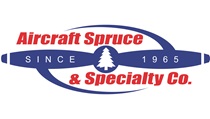
Savvy maintenance: Keep it minor
Do you really need the FAA’s blessing to modify your aircraft?

A Cessna 210 owner had his A&P install a gear mirror on the underside of the left wing so he could visually check that his landing gear was down and locked. Several years later, during an annual inspection, an IA told the owner that there was no Form 337 for the mirror and that it would have to be removed before the IA could sign off the inspection as airworthy. The IA indicated that the only alternative would be to ask the local FSDO to send out an aviation safety inspector to inspect the mirror installation and see if the ASI was willing to grant a field approval. Who was right?
Clearly there’s a lot of confusion about field approvals. The topic is not just confusing to aircraft owners; lots of mechanics are confused by it, too.
Major or minor?
Any time you modify a certificated aircraft, you’ve committed what is referred to in the federal aviation regulations as an alteration to the aircraft’s type design. The regulations recognize two kinds of alternations: major and minor. Major alterations are significant enough to pique the FAA’s interest. The agency doesn’t want to be bothered about minor alterations.
FAR 1.1 defines a major alteration as one that might appreciably affect weight or center of gravity limits, structural strength, performance, powerplant operation, flight characteristics, or “other qualities affecting airworthiness”—or that is not done according to “accepted practices” or cannot be done by “elementary operations.” Any other alteration is considered minor.
That definition leaves a lot to the imagination. To bring the distinction into sharper focus, the FAA provides a list of things it considers to be major alterations in FAR Part 43, Appendix A. Some nonregulatory advisory circulars also can help mechanics decide whether an alteration is major or minor. (For example, installation of shoulder harnesses or angle of attack indicators is minor, while installation of an IFR-certified GPS is major.)
Who decides?
Responsibility for determining whether an alteration is major or minor lies with the mechanic who performs the alteration. A mechanic who asks the FSDO is simply passing the buck, not doing his job—and not doing you any favors.
If the mechanic determines the alteration is minor, he can perform it using methods, techniques, and practices he considers acceptable, and then sign off the work with a simple logbook entry. The FAA never gets into the act (and doesn’t want to).
On the other hand, if the mechanic determines the alteration is major, he’s obligated to perform the alteration in strict accordance with “approved data.” Approved data means the drawings, specifications, methods, techniques, and practices used to repair or alter something have been signed off as approved by some authorized representative of the FAA.
The most common source of approved data for performing major alterations is a supplemental type certificate (STC). Another possible source is an airworthiness directive (AD). But if you want to perform a major alteration for which no STC or AD exists, then your mechanic is going to have to make up the data himself and find some authorized FAA representative to approve it. That’s most commonly an inspector from the local FSDO, although in certain circumstances the data may need to be evaluated and approved by an independent FAA-designated engineering representative (DER) that you hire.
Paperwork
If your A&P thinks you might need a field approval, his first step should be to consult the FAA’s online Job Aid that FSDO inspectors are required to use in evaluating field approval applications. The easiest way to find it is to Google “major alteration job aid.” (Many A&Ps have never heard of this, so you might need to educate yours.) This pivotal 90-plus-page document provides inspectors with a long table of possible kinds of alterations, with each coded as “EVL” (Evaluation), “ENG” (Engineering), or “STC.” If your proposed alteration is marked “EVL,” you’re in luck: The inspector has the discretion to evaluate your data and issue you a field approval. If it’s marked “ENG,” then you’ll need to hire a DER to perform an engineering evaluation of your data before the inspector can issue a field approval. If it’s marked “STC,” then a field approval is not possible, and you’d have to apply for an STC to get your data approved.
Assuming the Job Aid classifies your proposed alteration as “EVL,” the next step is to prepare an FAA Form 337 with the data for your proposed alteration attached. It’s wise to structure it to conform with the 16-point checklist found in FAA Advisory Circular 43-210A, Standardized Procedures for Obtaining Approval of Data Used in the Performance of Major Repairs and Major Alterations. (Unless your A&P is experienced seeking field approvals, you might have to point this one out to him, too.)
The completed Form 337 with your 16-point data package is then submitted to the local FSDO, where it will be assigned to an inspector for evaluation. If your A&P is an IA, he will already have a working relationship with a principal maintenance inspector at the FSDO, and that can help.
The inspector will evaluate your data package in the fashion set forth in the Job Aid. He will first ensure that what you’re proposing to do is truly a major alteration that requires FAA approval. He’ll then ensure that it’s within his authority to approve. Finally, he’ll determine if it complies with applicable FAA airworthiness standards.
Inspectors are not aeronautical engineers. If your proposed alteration needs an engineering evaluation (e.g., if it’s categorized as “ENG”), you’ll probably need to hire a DER to perform that engineering work and sign an FAA Form 8110-3, Statement of Compliance with Airworthiness Standards. Then attach this form to your data package and submit it to the FSDO for field approval.
If your data package passes muster, the inspector will return it to you with Block 3 of the Form 337 stamped and signed, and you then can make the mod to your aircraft with impunity. Otherwise, he will return the package unapproved and explain the reasons he could not approve it, giving you the chance to amend your package and resubmit it.
If this sounds like a lot of work, it is. That’s why you don’t want to get the FSDO involved if you can avoid it. The best way to avoid it is to find an A&P who is comfortable treating your modification as a minor alteration and signing it off with a simple logbook entry.
So, who was right?
This brings us back to the Bonanza owner who wanted to install a second cigarette lighter socket, and the Cessna 210 owner with the gear mirror. Were either of these major alterations?
To my way of thinking, the Bonanza owner’s extra cigarette lighter socket was clearly a minor alteration. It does not meet any of the criteria of the FAR 1.1 definition of a major alteration. Part 43 Appendix A says that for an electrical system alteration to be considered major, it must be a “change to the basic design of the electrical system.” Converting from a generator to an alternator or adding a second alternator or an additional electrical bus would constitute a change to the basic design of the electrical system, but simply adding a second cigarette lighter and a protective fuse or circuit breaker would not. I think the Bonanza owner’s A&P was right.
The Cessna 210 owner’s gear mirror is a bit tougher. It does hang out in the breeze and so one could argue that it “might appreciably affect…flight characteristics,” although I find that dubious. I think the A&P who installed it as a minor alteration was acting reasonably and within his discretion, and the IA who insisted the mirror be removed (or a field approval sought) was being much too conservative. But admittedly this one is a bit muddier.
Of course, it really doesn’t matter what I think. It’s the opinion of the installing mechanic that counts.
Mike Busch is an A&P/IA. Email [email protected]



